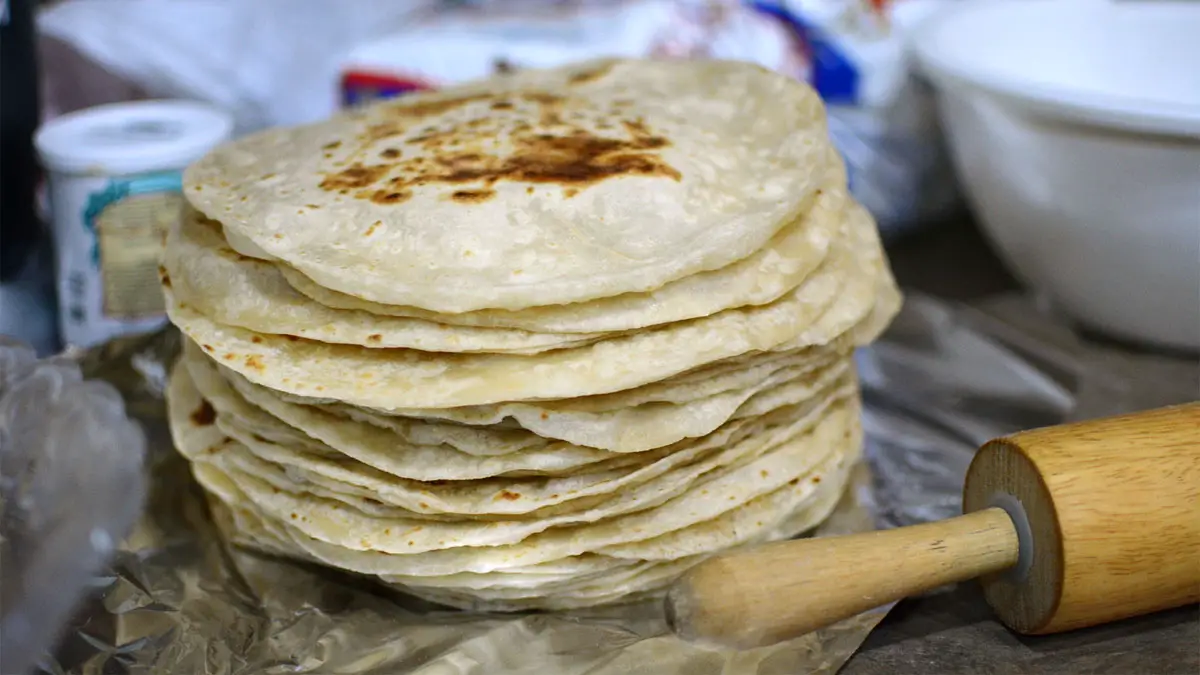Americans have a well-known habit of absorbing bits of culture from immigrants and adapting it to become something unique while still bearing some resemblance to its origins. Nowhere is this more apparent than with food.
Take, for example, the tlaxcalli, or (as it’s known today) the tortilla. When the Spanish discovered Meso-Americans cooking their tlaxcalli, they thought they looked like little round cakes (or torta, in Spanish).
Today, the tortilla is a popular bread alternative used in all sorts of American adaptations of Mexicano-derived foods, such as tacos and enchiladas. But you might not know just how many versions of the tortilla there are out there. Here are 12 to whet your appetite.
See Also: 23 Different Kinds of Bagels
Types of Tortillas
1. Beetroot Tortilla
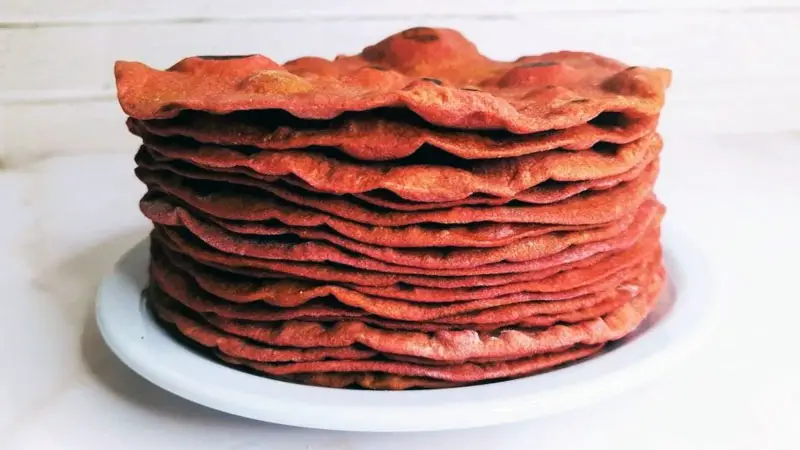
Beetroot tacos have a distinctive reddish tint to them and offer a bit of extra flavor over regular tortillas. They can be made using either corn or flour tortilla recipes, with one extra ingredient: beetroot.
Depending on the accessibility, the beetroot may be either straight beetroot juice or a beetroot powder. Not only do beetroot tortillas add some color and a very mild bitter kick to your foods, the beets themselves add a lot of nutrition and extra health benefits.
This makes beetroot tortillas an excellent choice for those watching their weight or health.
2. Blue Corn Tortilla
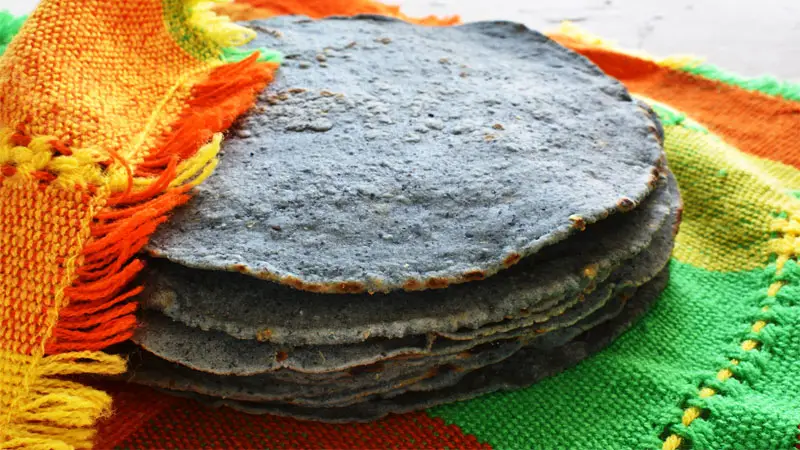
This is a more complex take on the traditional corn tortilla using blue maize (corn). Baking soda, blue corn flour, salt, and sugar are all whisked together before adding avocado oil. This gives it a slightly different flavor than regular corn tortilla recipes, and the blue color adds some extra exoticness.
You can sometimes find blue tortillas under the names of Hopi maze, Rio Grande blue, and Yoeme blue. They have the same use as other corn tortillas, and blue tortilla chips can add some flair to any party.
3. Corn Tortilla (from Masa Harina)
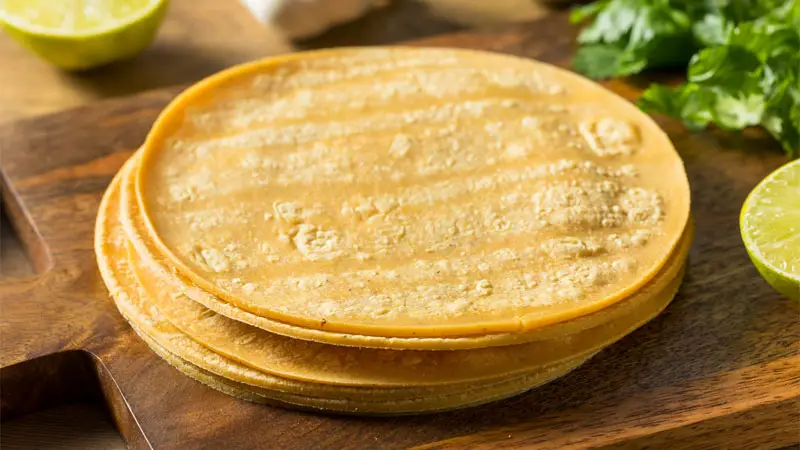
This is the original tortilla and uses an important process called nixtamalization. In this process, corn kernels are dried, then boiled in lime. Nixtamalization has several benefits, such as improving the body’s ability to gain nutrition from the corn, better flavor, and the corn becomes easier to grind.
Both white corn and yellow corn are commonly used, and the two are sometimes distinguished from one another for those that have a color preference but are otherwise identical in nature and flavor.
The corn is then ground into a paste, allowed to dry again (the result of this process is called masa harina), then mixed with water to form masa (dough). The dough is then divided, rolled flat, and grilled.
Corn tortillas are stiffer than flour tortillas, and are perhaps best known for their use as taco shells. However, they are also used in a number of other dishes, such as enchiladas, flautas, tortilla soup, and tostadas. Corn tortillas are often cut into wedges to make tortilla chips, which are a popular snack on their own.
4. Flour Tortilla
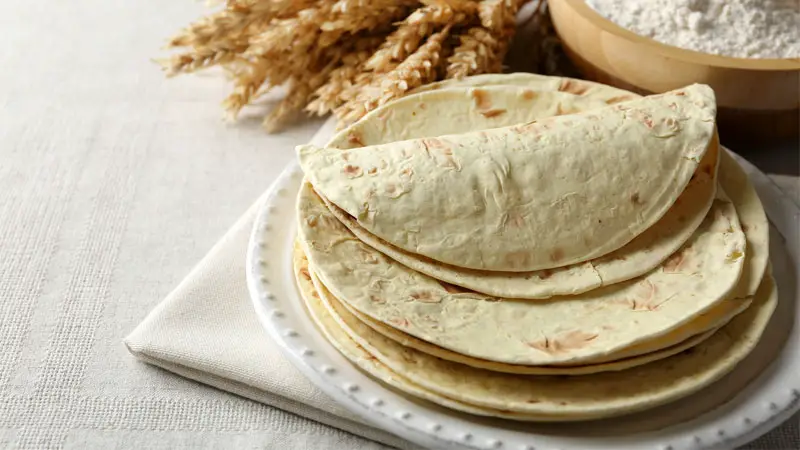
One of the two most basic tortillas, the flour tortilla came about after the corn tortilla. The original recipe was simply flout, lard, salt, and water. However, modern flour tortillas often use shortening or vegetable oil instead of lard.
Flour tortillas are soft and flexible, making them great for enchiladas and burritos, and soft-shell tacos.
Making these tortillas at home is easy. There are several simple recipes online, making this something you can do at home to create wraps as an alternative to normal sandwiches. Flour tortillas can also be sliced into wedges and fried to make a version of tortilla chips.
5. Gordita Inflada
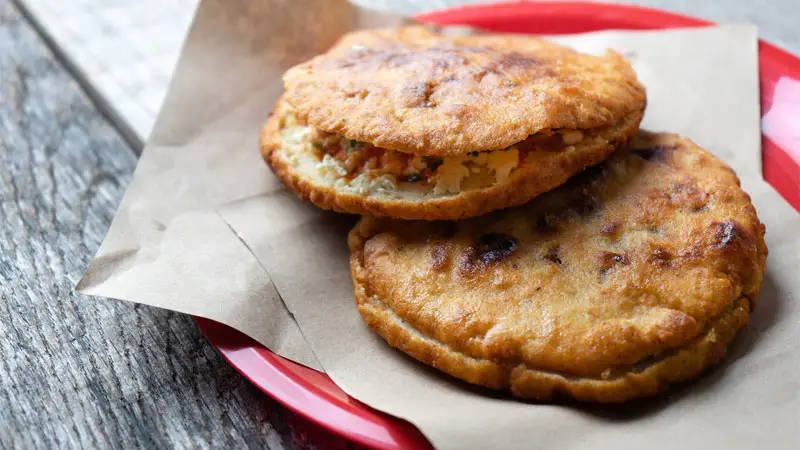
Of all the tortillas out there, the gordita inflada is perhaps the most versatile. The name itself means “puffed-up little fat one”, which is an apt description of this Veracruz, Mexico invention.
It begins with masa harina, then is mixed with mashed beans, mashed plantains, or wheat flour. The resulting tortilla can have a variety of subtle flavors and textures, based on the companion ingredient.
While cooking, they puff up, creating a chewy, fluffy overall texture that’s much softer than traditional tortillas. It’s not uncommon to remove them from the griddle and split them open, forming a sort of pocket bread.
Due to its similarity to pita, gordita inflada is a popular fare for food trucks and on-the-go meals. They can be eaten on their own, with plantains giving it a subtle sweetness (and mashed plantain is sometimes added as a topping as well), and beans having a more earthy tone.
They’re also commonly stuffed with beef, chicken, pork, vegetables, and/or cilantro.
Read Also: 11 Types of Ponchos
6. Güirila
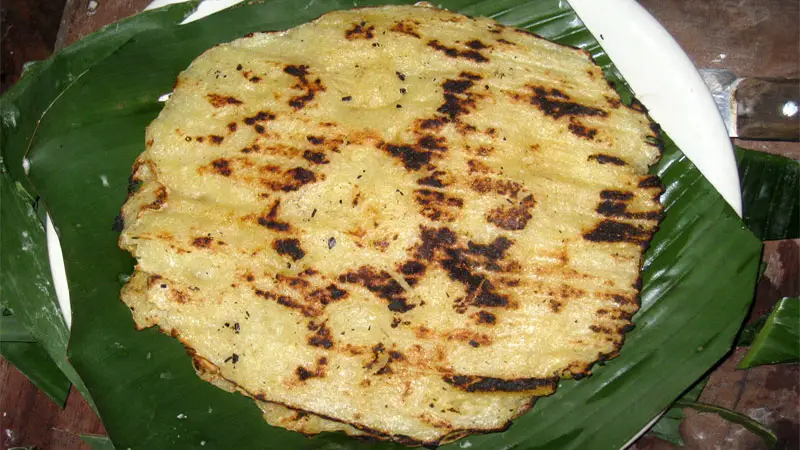
While tortillas tend to be associated with Mexico, they’re found throughout MesoAmerica. In the region of Matagalpa in northern Nicaragua, there’s a unique tortilla called a güirila that’s been gaining some popularity over recent years.
Of course, part of that claim to fame was likely from publicity during the 13th National Corn Fair when the city of Matagalpa prepared a güirila measuring 650 feet in circumference.
The güirila is made from young white maize which has been shelled, milled, and grilled between two banana leaves with just a touch of salt and sugar. It’s also not uncommon for street vendors to add a bit of milk to the mixture.
Güirilas are sweet enough to be eaten on their own, but are also frequently topped with crema (a sweet or sour cream) and cujada, which is a salty, crumbly white cheese that’s also native to Nicaragua. For a fuller meal, they’re often filled with pork or another meat.
7. Half and Half (Mitad y Mitad)
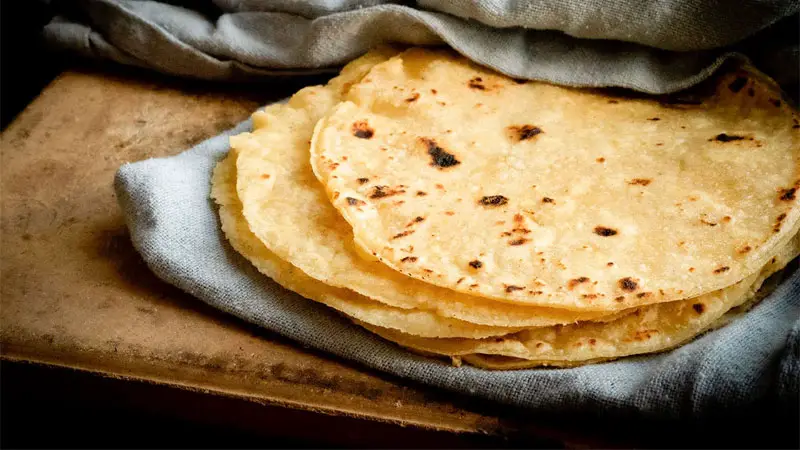
Sometimes referred to as the 50/50 tortilla, these are exactly what they sound like – half flour and half corn. They’re most often made with masa harina (the dough used for traditional corn tortillas) and all-purpose flour in equal parts.
The dough is then separated into balls, rolled flat, and grilled the same as any other basic tortilla. However, the results are a softer, chewier tortilla with a mix of textures.
It’s not uncommon to cook these with a little extra flour in place of some of the masa harina, which makes the tortilla fluffier and a little chewier than the default recipe.
8. Hoja Santa Tortilla
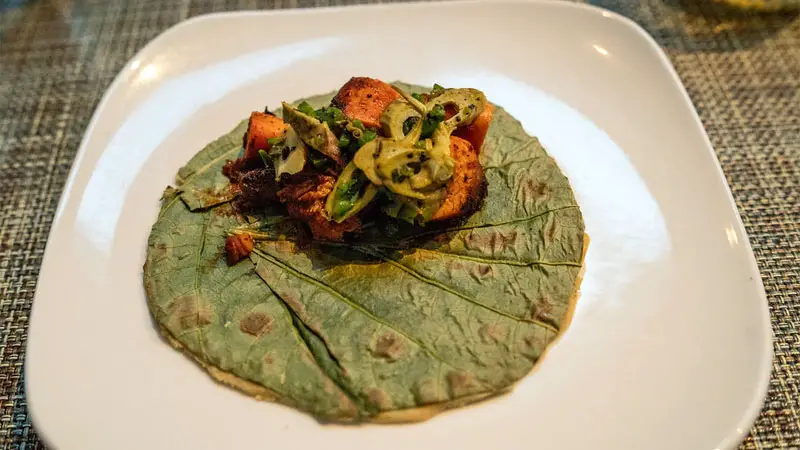
Hoja santa is a popular herb found in Central and South Mexican cuisine that adds a complex flavor to foods. The plant it comes from is the Mexican pepperleaf (Piper auritum) and it’s used in everything from teas and sauces to alcohol.
When added to a tortilla masa, the dough takes on a pastel green coloration. The resulting tortillas have a strong herbal flavor that adds some kick to just about any filling.
The bright green color is another great reason to use this tortilla, and it’s a great choice for parties when alternated with beetroot and regular flour tortillas on a serving tray.
See Also: 23 Types of Bowls
9. Nopal Tortilla (Tortillas de Nopal)
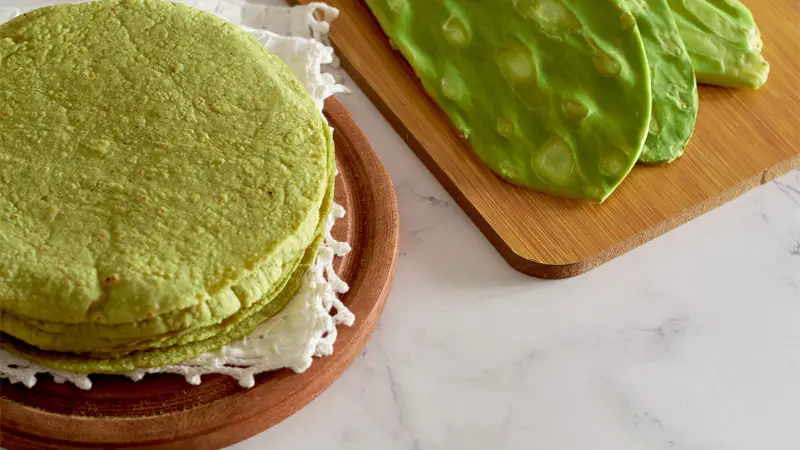
If you ever visit Mexico, you’ll find they’re often eating foods with a green tortilla. This is the nopal tortilla and is actually made from the nopal cactus.
The cactus is extremely common throughout the country and can be purchased almost anywhere groceries are sold. You can also get them in many stores throughout the American Southwest.
The tortilla is made using a specific portion of a type of cactus known as the nopales paddle. It has a very subtle sourness to it and can be found canned, dried, in salads, or (of course) in tortillas. Because the plant is high in fiber but has very little fat, it’s not only great for a little color and flavor variation, but also perfect for those on a diet.
10. Pan Arabe Tortilla
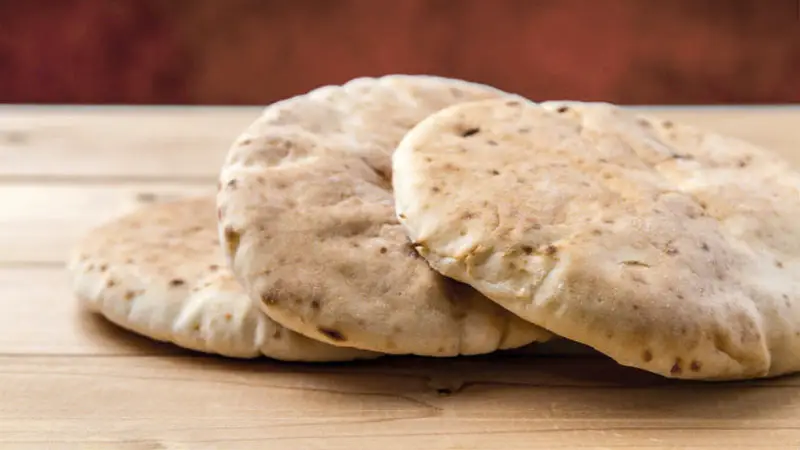
When most people think of Mexico, they think of the Spanish and Meso Americans. However, the population is a lot more varied and this has affected the cuisine.
A perfect example of this are the Lebanese immigrants of Puebla. In the 1930s, these immigrants invented a new type of tortilla called a pan arabe, which is perhaps better known today as the base for “Arab tacos”.
Unlike more traditional tortillas, the pan arabe is thicker and sturdier, yet maintains a soft texture. Because of their thickness, they’re more like a cross between a flour tortilla and a very thin pita – the latter being a frequent comparison.
They’re most often filled with spit-roasted marinated pork, lemon juice, chipotle, and salsa, although they can be used in almost any recipe that calls for a tortilla.
11. Salbut Tortilla
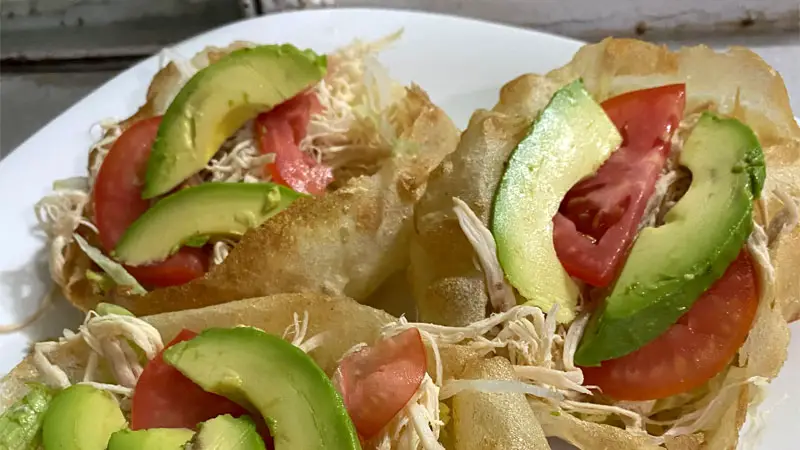
Originating in the Yucatan Peninsula, salbut tortillas are sometimes referred to as fried puff corn tortillas or Yucatan fried masa tartlets. They’re especially popular in Belize where they’re a common street food. They’re also frequently found in local fast food restaurants and parties. In fact, there’s even a festival in the region for salbut!
If you can get hold of salbut tortillas, try filling them with pulled chicken or turkey, lettuce, tomato, onions, and avocado for a traditional filling. Alternatively, you can use any filling you’d like or even eat them plain as a delicious snack. One taste and you’ll know why they’re so popular.
12. Whole Wheat Tortilla
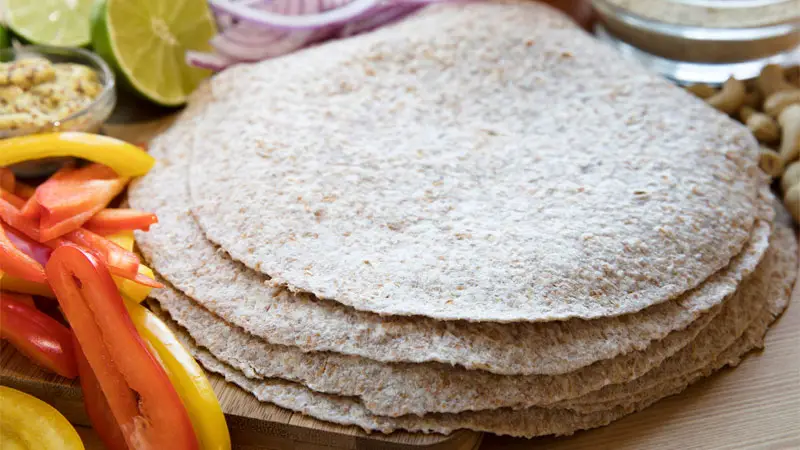
Whole wheat tortillas are a delicious and nutritious alternative to traditional white flour or corn tortillas. They are made from whole wheat flour, which is the entire grain of wheat, including the bran and germ, that is ground into flour.
This type of tortilla is a healthy way to add variety to your meals and can be used to make wraps, tacos, quesadillas, and many other tasty dishes. They are higher in fiber and contain more vitamins and minerals than their flour counterpart though they may not taste as good for some individuals.

